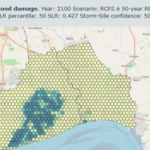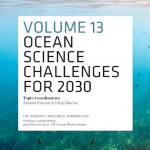Post Doctoral researcher receiving funding from EuroSea, Bàrbara Barceló-Llull (Mediterranean Institute for Advanced Studies, IMEDEA, Spain), led an article in Frontiers in Marine Science discussing in situ sampling campaigns for validation of the new satellite mission on the Surface Water and Ocean Topography (SWOT) planned for 2022.
The mission, led by NASA and the French space agency CNES, will survey 90% of the Earth’s surface water, observe the fine details of the ocean’s surface topography, and measure how lakes, rivers, reservoirs and oceans are changing over time. This will help better understand the water dynamics, address issues like climate change, and improve the management of water as a strategic resource.
The region around the Balearic Islands in the Western Mediterranean will be the target of several in situ campaigns aimed at validating the first tranche of the new satellite’s data. In preparation for this validation, a cruise was conducted in 2018 to explore the three-dimensional circulation at scales of 20 km that the satellite mission aims to resolve, including in the fine-scale range (1–100 km) as defined by the altimetric community. These scales and associated variability are not captured by contemporary nadir altimeters. The findings of the study by Barceló-Llull et al. will help plan fit-for-purpose in situ data collection to validate the Surface Water and Ocean Topography satellite data and understand physical and biochemical spatial variability in the region.
The article is available here.


